
Phil Graziadei just got his big break.
The queer screenwriter made his cinematic debut with the film Honeymoon back in 2014. The movie, a story about a newlywed couple haunted on their honeymoon getaway, earned him positive notice as a writer. The film also marked his first major collaboration with longtime creative partner Leigh Janiak, who directed the film. The pair have been close friends for decades.
Now Janiak and Graziadei rocket to the big leagues, again dipping into the horror genre with Netflix’s Fear Street trilogy. The films–yes, all three feature-length–adapt horror writer RL Stine’s Fear Street book series into an epic tale of rival cities, star-crossed lovers and a Satanic curse. The films arrive on Netflix beginning July 2.
Part 1: 1994 follows the story of Deena and Sam (Kiana Madeira & Olivia Scott Welch), a closeted lesbian couple from the rival towns Shadyside and Sunnyvale. When a supernatural killer unleashes fury on Shadyside, the two fight to survive…and uncover the trail of something even more dangerous. Part 2: 1978 retells the story of earlier teenagers battling the same evil at summer camp. Part 3: 1666 reveals the true origins of evil in Shadyside, and a battle across time to end an evil curse once and for all.
How about we take this to the next level?
Our newsletter is like a refreshing cocktail (or mocktail) of LGBTQ+ entertainment and pop culture, served up with a side of eye-candy.
Call it RL Stine’s Lord of the Rings.
We sat down with Graziadei, who co-wrote the script to parts one and three, and co-wrote the stories for all three films, to talk about condensing a sprawling book series to three movies, why he chose to focus on queer leads, and the peculiar connection between LGBTQ audiences and the horror genre. Fear Street Part 1: 1994 debuts on Netflix on July 2, 2021. Fear Street Part 2: 1978 debuts on Netflix on July 9, 2021. Fear Street Part 3: 1666 debuts Netflix on July 16, 2021.
So this trilogy is only your second movie. Or, at least, your second, third and fourth films.
I know, it’s pretty wild. It’s also my first studio feature.
How do you go from a true indie with Honeymoon to a big-budget movie trilogy?
We got really lucky. With Honeymoon, we started walking right into studio projects. People were excited about that movie. We worked on a bunch of other things, but unfortunately, none of them saw the light of day. But it was just a process for us. It’s also been five years since Honeymoon, so it wasn’t like it was overnight.

Now, let it be said the Fear Street series penned by RL Stine is much longer than just a trilogy. How did you go about distilling it into a three-film structure?
You know, we took Fear Street as a starting point. There’s a lot of great stuff in there, but Stine himself is on record saying he never really tried to tie things together. It would have been to hard and too limiting. I think the series really focused on the pleasures of gore in all its infinite repeatability. For us, coming into this making three movies for relatively close release, the format of the Fear Street books is really conducive to a traditional horror franchise. Because we were coming into this with a different configuration in mind, we thought we needed to tell the story in a different kind of way. So we tried to do things to close a chapter in each movie, but make a feeling there was something more so you want to come back.
What’s interesting is that you & Leigh also set the tone and design of each time period to correspond to the horror movies of the era. 1994 is very much in the vein of Scream. 1978 is very much akin to Friday the 13th. 1666 doesn’t correspond to a contemporary genre, exactly, though tales of witchcraft and devils were common in the era. It really takes a page from American Horror Story in that it combines the casts of both earlier films into one.
Mmhmmm.
Why that approach?
All of it comes from me and Leigh. I guess the idea was—we conceived of these stories as an allegory for systemic oppression. Which makes them sound really dry. They’re not. They’re fun. All the decisions we made in terms of the structure of each individual movie and their place within the trilogy flowed from that.
So did you consciously decide to deconstruct the different periods of horror within that?
Oh yes, 100%. That was part of the joy of it, especially for Leigh as director. It’s a total playground. You get to do three things that have such distinct styles. And again, how do you keep audiences coming back for more in close succession? You can’t give them a recycled permutation of the same idea. So tonal shifts were pretty significant.
Also, for my part, making commentary on horror in different eras is very closely linked to queer representation.
How so?
Well, horror has a complicated legacy with queer representation.
Yes it does.
Basically, for 100 years of horror films the only way we’ve been able to see ourselves represented on screen has been as tragic victims or monsters. So taking these movies, we knew we had the space to do something with social scope. So centering on a queer love story, we were able to show how things have been, and how these cycles repeat themselves. Most importantly, we show that it doesn’t have to be that way. We don’t have to be monsters.

Though sometimes it is fun to be a monster.
Sure, there’s a lot of power in that. You have nuanced portrayals of queerness in horror, and embracing that power, that monstrousness. But at the same time, at the end of the day, if that’s all you see on screen, whose lens is that? Queer people don’t need movies to tell us how society sees us. We know.
Truth. And you sort of allude to this, but horror and queer people have an odd relationship. There are great queer horror writers and filmmakers and an enormous fanbase. Do you feel like the extremity you mention there—of us being victims or monsters—is that the source of the fascination?
Yeah, well, I mean, I think it only makes sense that a group of people forced to live their lives in the shadows are going to see themselves lurking in the dark corners of horror movies. Queer people are used to scrounging for scraps of ourselves in subtext. Our survival has depended on there being no concrete trace of our queerness. In that sense, queer love of obscenity and horror is a natural match.
Related: Mind behind ‘Penny Dreadful’ to tackle new level of horror: conversion therapy camp
There is a lesbian relationship at the center of this story—of all three stories, really. Was that in the books? How did you go about developing that?
The Fear Street books, like anything, are a product of their time. So the short answer is no, there is no overt queer representation that I saw, though I didn’t read all of them. But one thing that we do have, because the books have an incredible, internet fan base, there are these incredible blogs that catalog-style trends in each book. One category they go through is homoerotic subtext. So for us, it was an opportunity to make that canon.
I love that.
Honestly, I’m a bit like you. When I was a kid, I didn’t read these books. Most of them were intended for teen girls, so I was always terrified that if I picked the book up and someone saw me reading it before band practice or wherever, the times I was called “f*ggot” would explode exponentially. My life would be over. So getting to revisit them as an adult was a change to go back to that kid who was afraid to pick them up in the bookstore and revisit that.

Did giving the story a lesbian relationship as the focal point make the series a harder sell?
We’re lucky to be working in a period where some studios think its cool to make queer content. So our producers at Chernin were very supportive. I should also say how appreciative I am that Netflix wanted to take these movies and give them to the world. So it wasn’t a hard sell. And RL Stine himself has been very supportive. I don’t know if you have seen anything he’s said about the books and this adaptation. It’s very much saying “Fear Street is for everyone.”
It’s hard to discuss the twists to some of the love story without giving anything away. What I’ll say is that the series reminded me of Them, an Amazon series that also has a queer creator. Both of them focus on the idea that the fear and hate that we endure today as the past infringing on the present. Was that a conscious statement for you to make with these films?
I hope that comes through in the movie. There are moments, for instance in ‘94, when Deena and Sam are talking. They say, “We’ve been together one night, and dead people are trying to kill us.”
Quite a literal interpretation. And that’s the ultimate horror of the movie—the idea that we can’t escape the darkness of the past.
Yes, and that is rooted in the queer relationship. And we tried to do that across the board in terms of representation in all the movies. All our characters are outsiders, and they are never punished for the things that make them different. Each one of them has a character-reveal moment where the way they try to overcome what’s being thrown at them is through their experience as outsiders.
That also makes the characters fun. We like to identify with outsiders. Now, in diving into his work, what’s the source of RL Stine’s popularity?
There’s so much in the books, just by virtue of being so many of them. There’s something for everyone in there. He also, consciously—and pretty radically for the time—makes comments about the way women are portrayed as idiots in horror movies. That’s great, it’s amazing for books coming out in the 80s and 90s. There’s a lot there.

You worked with Leigh, who directs here, on Honeymoon as well. Tell me about that working relationship. How do you bring the best out of each other?
I think Leigh and I push and pull each other in different ways. We’ve been best friends since 1998. We moved out here to write horror movies together.
Amazing.
From a writer’s perspective, in having her as a director is a way to get more of my vision up on screen. That is a big difference for us. If we were writing for another director, that might not be the case.
So how do you work together?
It’s mostly a lot of screaming and yelling at each other.
[Laughter]
Animated, I love it.
It’s a long and complicated relationship. So anything either of us is doing isn’t just that thing, it’s everything we’ve ever done or said to each other. Our premise is different depending on the project. Sometimes we write drafts of the same scene and come together to see what we like in each of them. Sometimes we take passes on different scenes and trade. There’s no set way through for us. Then, a lot of time in the planning stages, we just talk through everything.
You guys had a troubled production due to COVID-19 and due to the sale of Fox to Disney throwing your distribution into a tailspin. How did you deal with that kind of uncertainty?
Lucky for me, most of my work was done before any complications from the Disney buyout and way before COVID. We were greenlighted at Fox. Disney continued that when they took over. In terms of production, COVID hit during post. I can tell you Leigh quarantined and cut the movies with her editor in her basement.

Was there ever a question if any of it would see the light of day?
Every second. I think with any project it’s like that. Everything is a go, until it’s not. And you may not have control over factors that will make a studio decide they may not want to put a movie out, or to put it somewhere different. I don’t think we were ever really in a place where I thought these wouldn’t come out. We had a lot of support. Netflix was incredibly supportive from the second they acquired this.
What’s next? Sequels? Is there another story you want to pursue?
I just want to keep working, making movies I want to see. If some of those end up on Fear Street, then great. If they end up in another town altogether, that’s fine too.


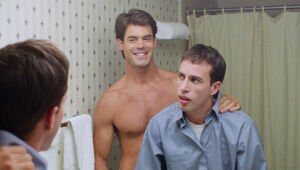

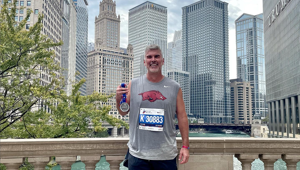
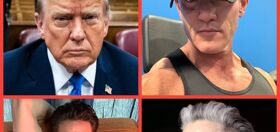



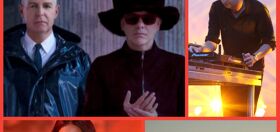


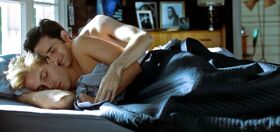



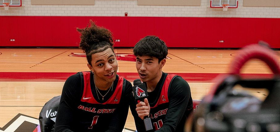
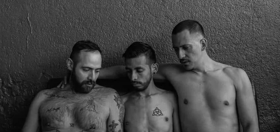

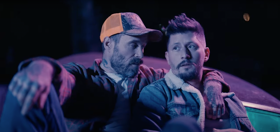
skeldare
Lesbian’s are probably an easier sell to a straight male audience.
quantum
It’s probably has more to do with the fact that nearly every book in the series had a female protagonist.
Prax07
I remember reading some of this series back when, and yeah, every book was centered around a high school girl. Not even sure I’ll watch these.
DarkZephyr
I loved these books when I was a teen. Will definitely watch these.
valjo
You speak of queer representation in horror films and yet this is your idea of how best to represent the trans community in a horror film? Trans representation in film is extremely important and the long history of cis men playing trans and crossdressing for comedic effect leads to real world harm to trans people.
Her name is (B)Eddy and she’s a man in lipstick oops we slashed her throat lol. This scene perpetuates the abuse that the trans community endures. Do better.